- Ages 10+
- 1-4 Players
- Single Player
- 30 min game play
The colorful dice, simple rules, and low-stress play make Sagrada a great game choice for low-key game nights. The one-player version is played similarly, with only one or two adjustments.
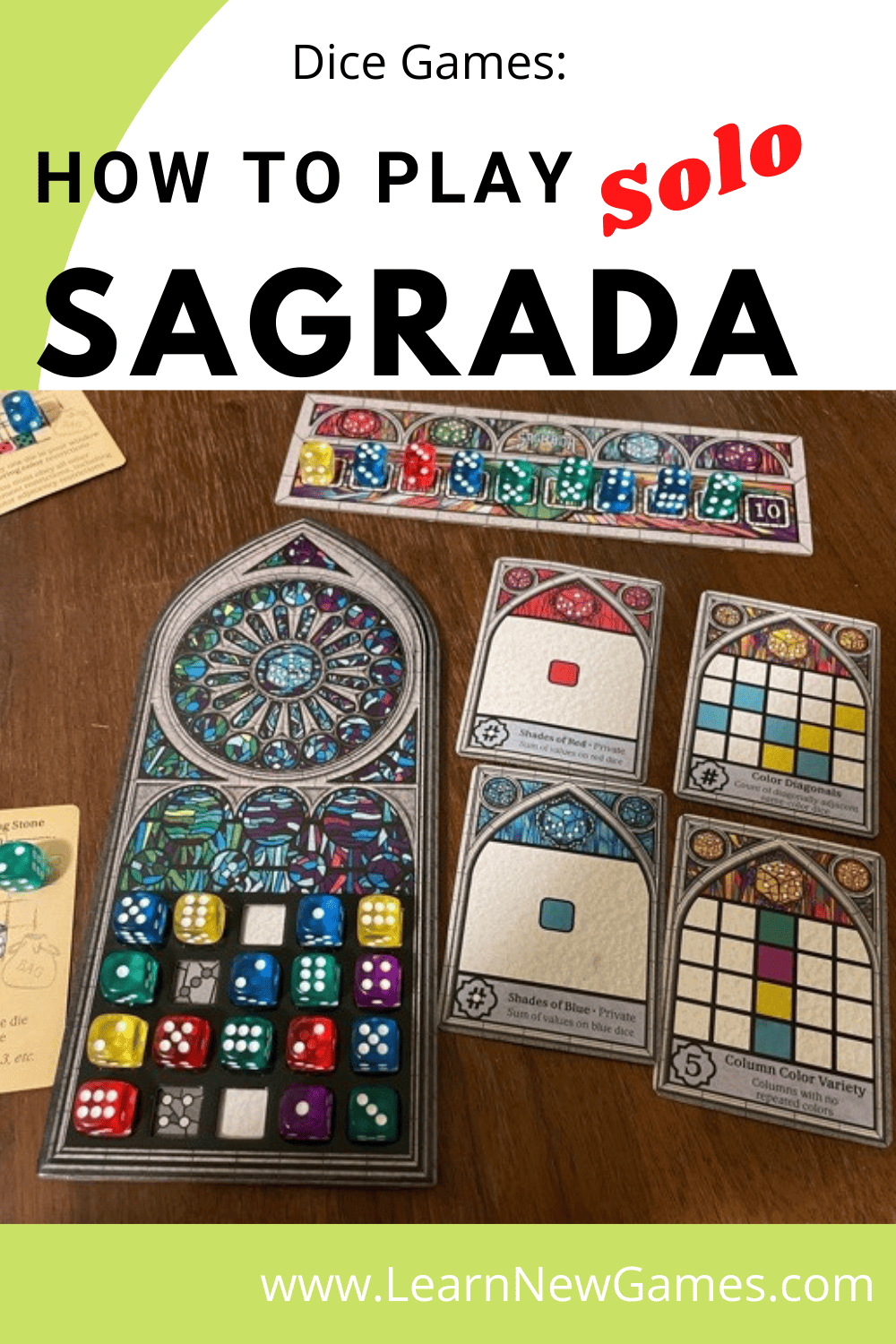
To play Sagrada by yourself, place colored dice strategically on a 5×5 squared window board in specific color and pattern varieties to gain points. Remaining dice are tallied for scoring. After 10 rounds, earn points for completing specified patterns. Collect more points on the window board than the tallied score to win.
Printable Sagrada Rules
Watch it Played
Overview
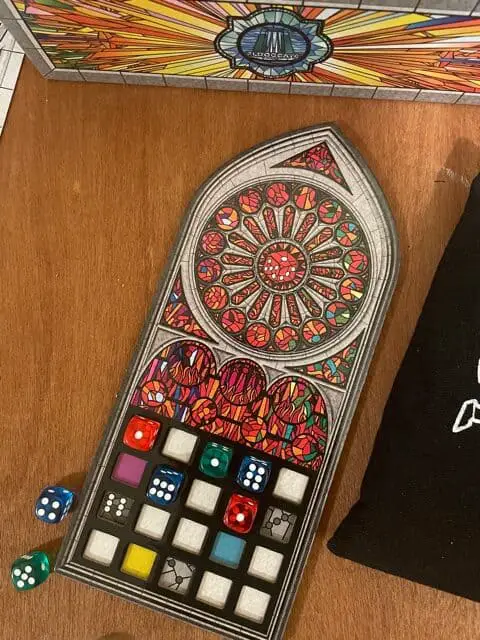
- Ages: 12+ (youngers can play if teamed up with someone older)
- Gameplay: 10 minutes
- 1 player
In the box you’ll find: window boards, window cards, a drawstring bag of multi colored dice, round track, scoring tokens, tool cards, private objective cards, public objective cards, and marbles.
Window Board
This holds the window card, on which the game will be played.
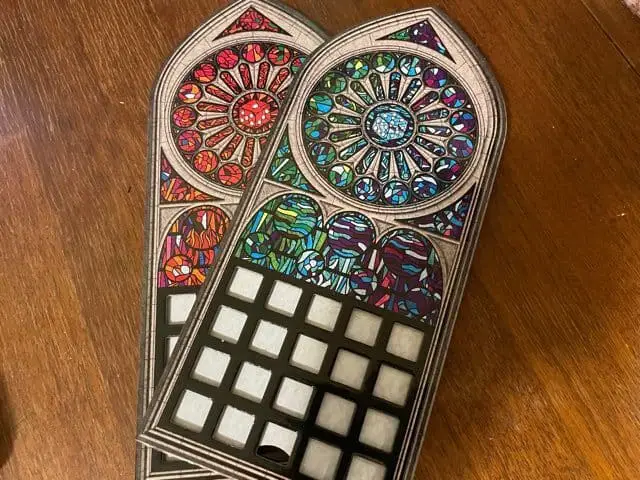
Window Card
These cards fit into the base of the window board. At the bottom of each card, there are 3-5 white dots. This indicates the level of difficulty. 3 is the easiest, and 5 is the most challenging.
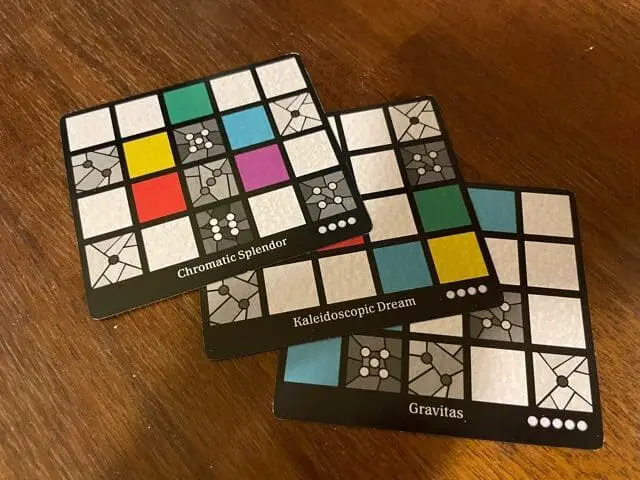
Multi-Colored Dice & Bag
These dice are played on the window card. If indicated, you must follow color or number restrictions when placing dice on the window card.
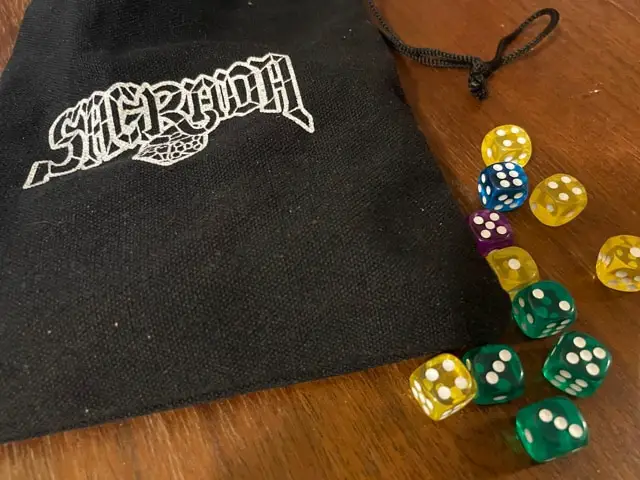
Round Track & Scoring Tokens
This two-sided board is used to both keep track of rounds played and also end game scoring. Scoring tokens are used for end-game scoring.
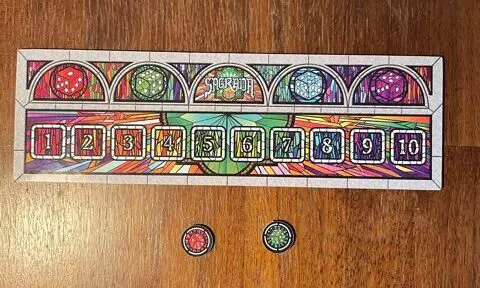
Tool Cards
A cream card indicated by a tool on the back of the card. In solo player Sagrada, 1-5 cards are used, depending on the difficulty level you prefer. 5 cards are the easiest, 1 card is the most challenging. A tool card can be used one time per game.
Each card is unique and instructions are listed on each card. To use, one of the four dice rolled must be the color indicated at the top right corner. Once the card has been played, that die and card are moved out of play. This counts as one of your two plays in a round.

Private Objective Cards
These cards are indicated by the white die in the corners on the back of the card. Earn points by collecting the colors indicated on the cards. Points are tallied at the end of the game.

Public Objective Cards
These cards are indicated by the colored dice on the back of the card. To earn points, place dice during game play according to the directions on each card. Points are tallied at the end of the game.
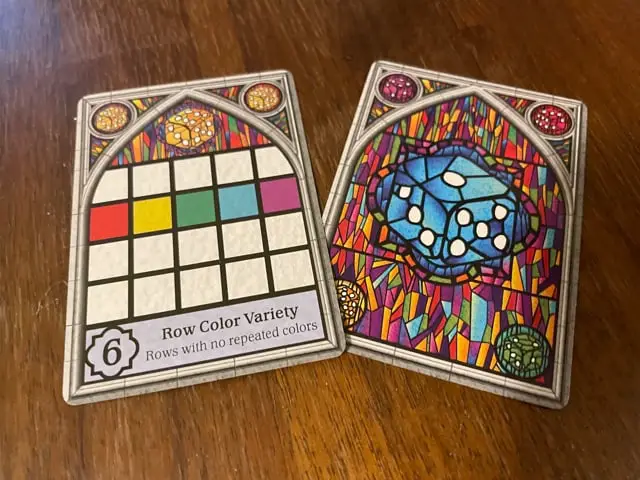
Marbles
These are not used in the single player game.
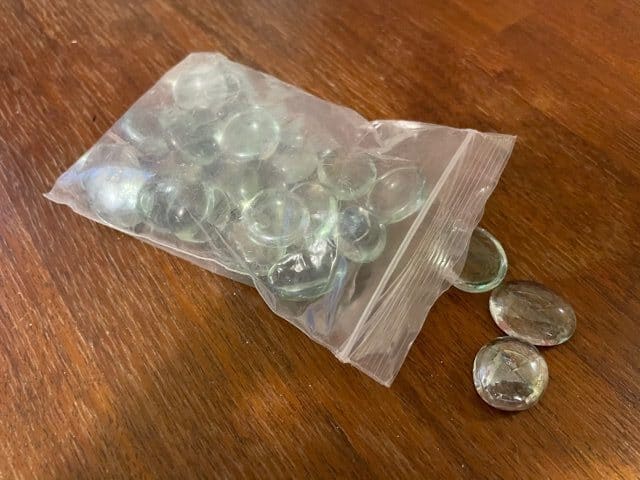
Game Set Up
Pick a window card based on the difficulty level of your choice. Place the window card in the window board.
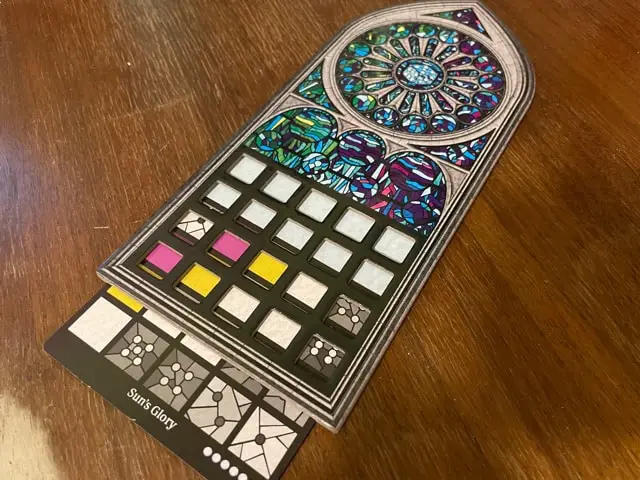
Blind draw 2 private objective cards, 2 public objective cards, and between 1-5 tool cards. Place these cards face up close in front of you.
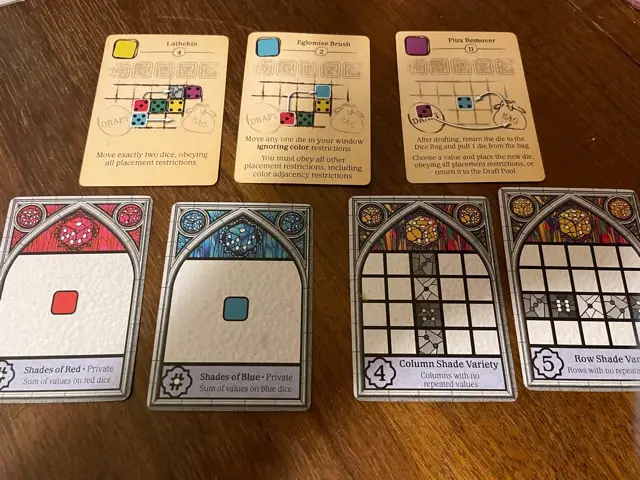
Place the strip with the 10 dice face up. Set the tokens aside, they’ll be used when tallying points at the end of the game.
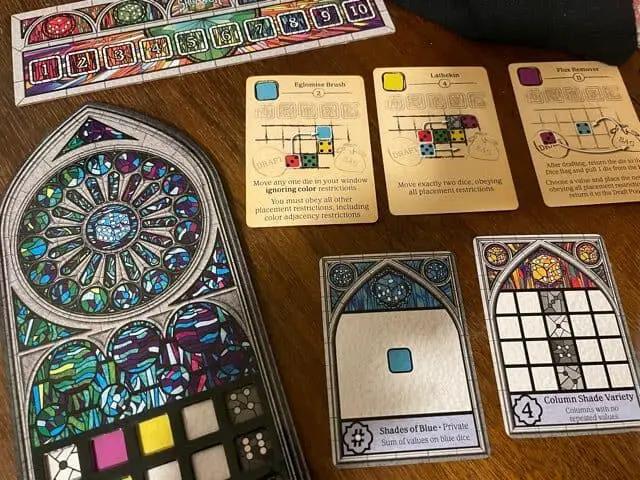
Each game consists of 10 rounds. In each round you will use 4 dice. Do not peek in the bag when pulling out the dice. To begin, draw 4 dice from the black bag.
Die 1: Choose your first die. You must place the first die along the edge or corner in the window card. Note any color or number restrictions when placing your die.
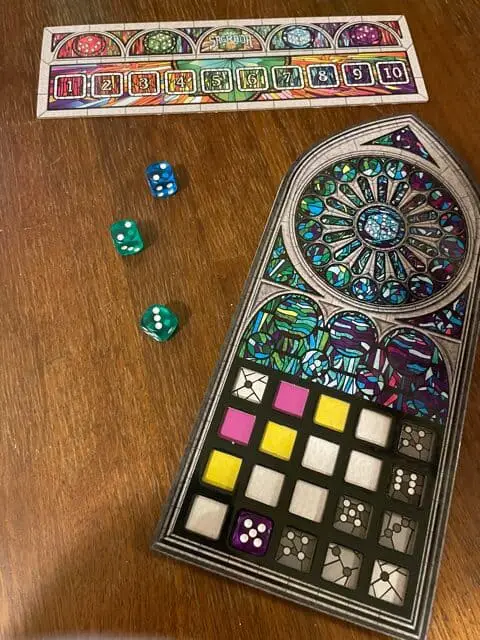
Die 2: Choose your second die and place it adjacent, either vertically, horizontally or diagonally to the previously placed die. You may not place the same number or color vertically or horizontally. For subsequent placements, the die being played must be adjacent to any previously placed die.

Die 3:Choose a third die and place it on the round track. These points will be added up at the end of the 10 rounds to form the score to which you’ll be attempting to beat.
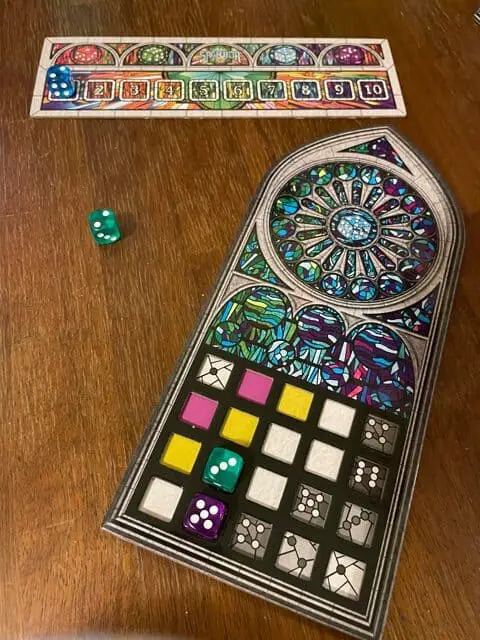
Die 4: Place the 4th die out of play.
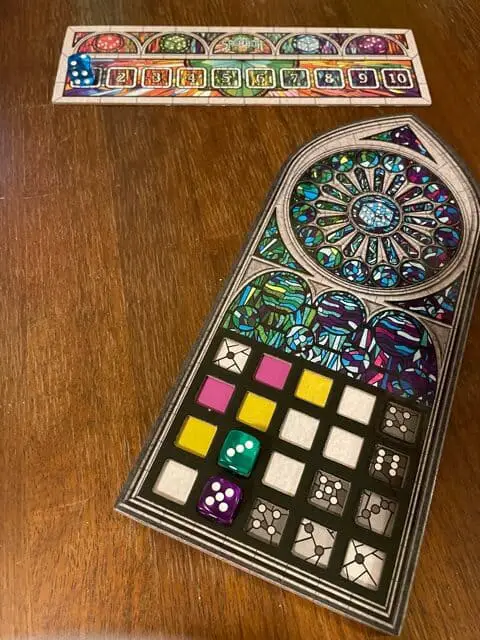
If you choose to use a tool card, that counts as one of your two plays on the board. Because a die is used on the card, your window card will not be full at the end of the game.
Game Play
Round 1: Begin by rolling the first four dice. Before any dice are placed, review the public and private objective cards.
The first die of choice, a blue 5, is placed on the corner and the green 1 next to it. The 3rd die, a yellow 2 is placed on the score track in square one and the 4th die is placed out of play.
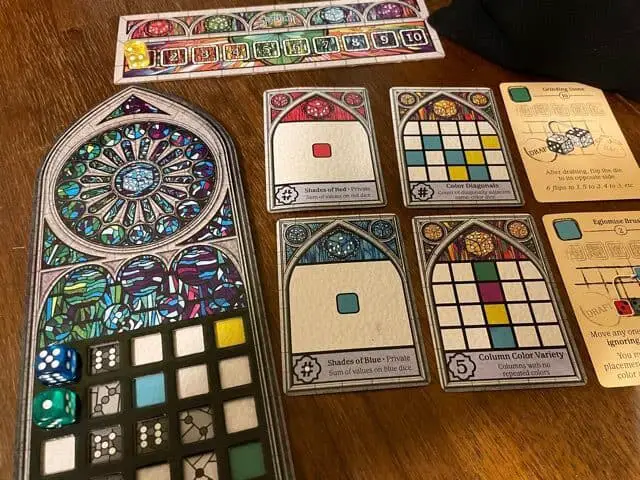
Round 2: Pull 4 new dice from the bag. Roll dice. Die 1, red 5 is placed diagonally. Die 2, yellow 2, is placed between the green 1 and the red 5. Remember, dice placed horizontally or vertically can’t be placed next to the same color or number. The blue 5 is the highest of the last two dice and is placed on the score track. The final die is placed out of play.
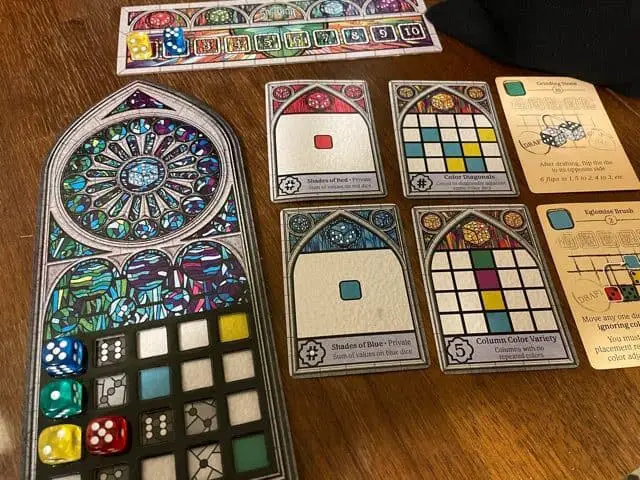
Round 3: Draw 4 dice. Die 1, blue 2 is placed on a blue square. Die 2, a green 6 is placed below on a six square. Die 3, red 3 is placed on the score track and die 4 is moved out of play.
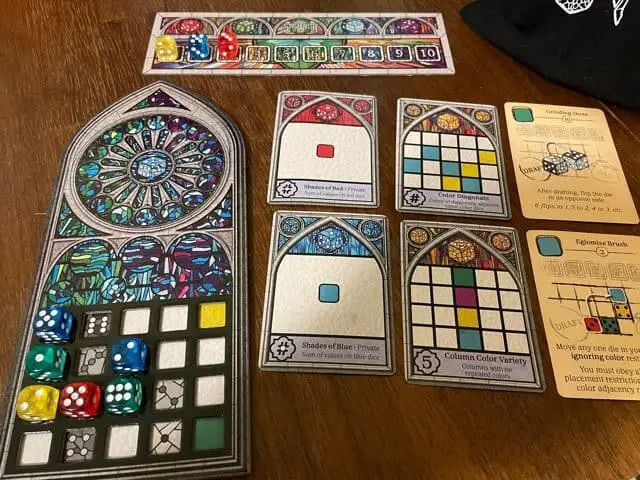
Round 4: Draw 4 dice. Die 1, red 2, is placed on the 2 square next to green 6. Die 2, blue 5, is placed next to the red 2. The other blue five is placed on the score track and the last die is moved out of play.

Round 5: Draw 4 dice. Die 1, yellow 6, is placed at the top next to blue 5. Die 2, purple 4 is placed at the bottom of column 2. Die 3, green 3 is placed on the score track and the last die is placed out of play.
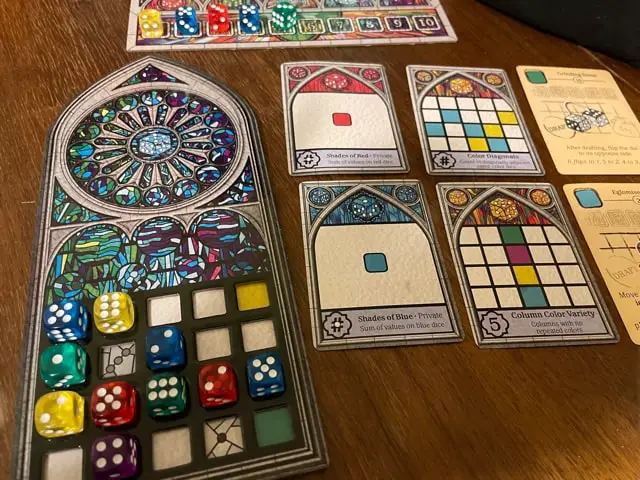
Round 6: Draw 4 dice. There are two dice with 1 to choose from to fill the bottom 1 square. But because there is a green in the bottom corner, the better choice is to use the purple 1 because two colors or numbers can’t be placed horizontally or diagonally. Die 1, green 3 is placed on the green square below the blue 5 on the last column. Die 2, purple 1 can be placed in the 1 square adjacent. Die 3, green 4, is placed on the track and the last die moved out of play.
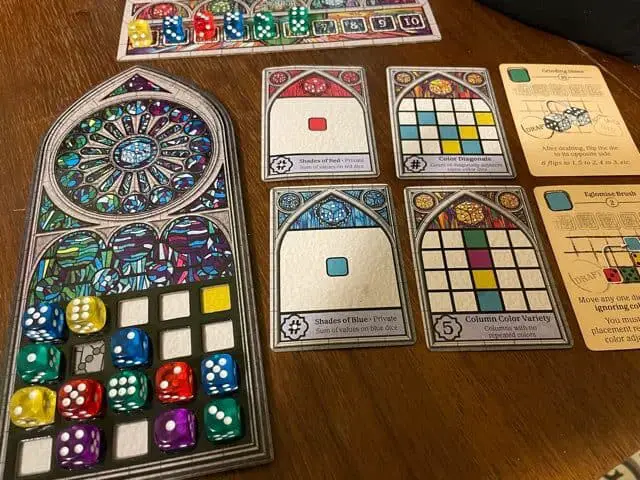
Round 7: Draw 4 dice. Die 1, red 6 is placed at the bottom of column 1. This completed column of unique colors will earn points as indicated on the public objective card. Die 2, blue 1 is played on the top of column 4. Die 3, blue 4 is placed on the score track and die 4, green 3 is moved out of play.
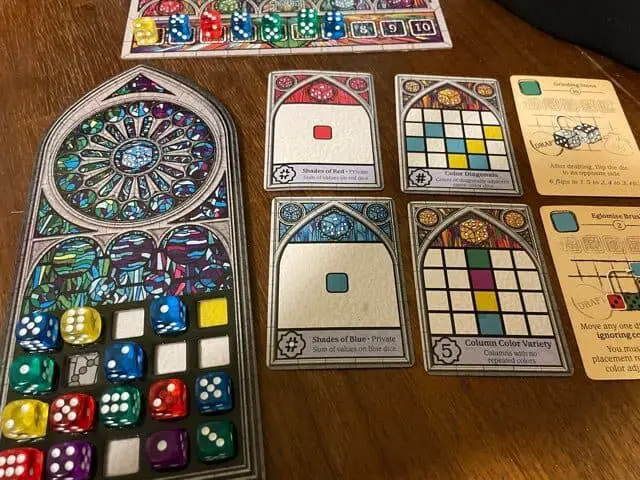
Round 8: Draw 4 dice. Placing die 1, green 6, in the empty square on column 4 completes it, and because all dice colors are unique, points will be earned at the end of the game as indicated on the public objective card. For the second play, a tool card will be used.
To use, you must have the same color die in the dice drawn, in this case a blue die. Using this card allows moving a die, ignoring color restrictions, to another square on the board.
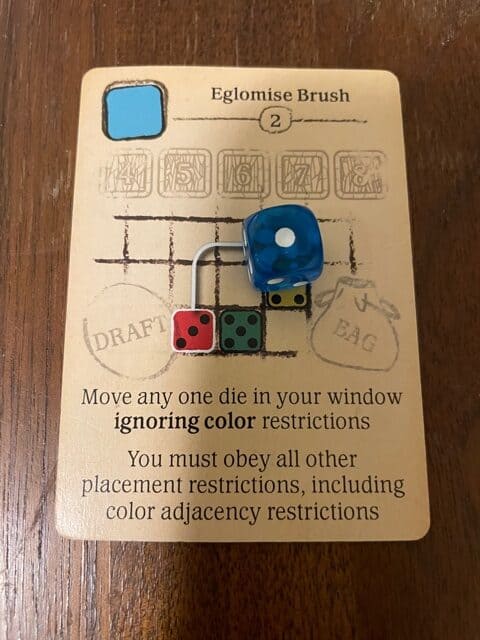
In this case purple 4 is moved to the last column in hopes to complete that column in unique colors, earning points. The blue die and tool card are removed, die 3, blue 4 is placed on the round track, and the final die is placed out of play.
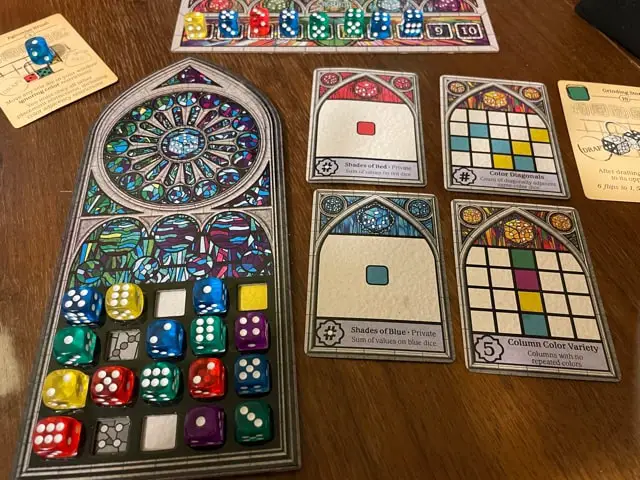
Round 9: Draw 4 dice. With only a few choices remaining, some of the dice cannot be used. Die 1, a yellow 1, can’t be placed in the top of the last column as there is a blue 1 next to it. But by using the other available tool card (green die in corner, which is available)
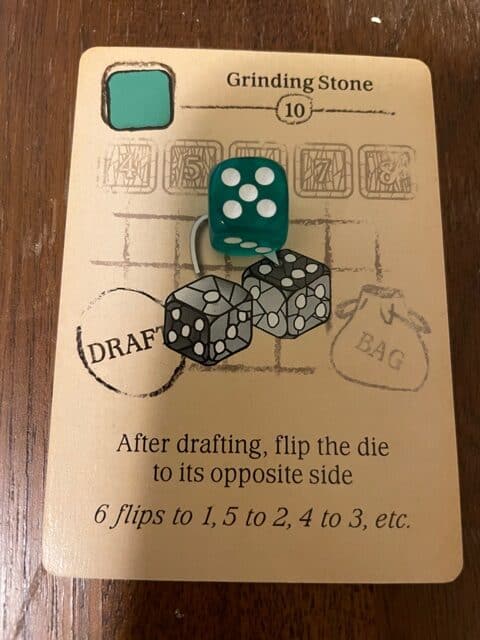
the yellow 1 can be turned over to a yellow 6 and placed in that spot, completing a unique column, earning points from the public objective card. Move the green die and tool card out of play. Die 3, green 5 is placed on the score track and and the final die moved out of play.
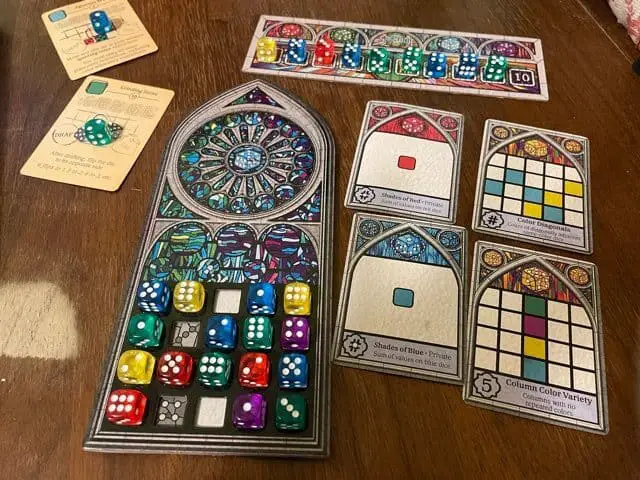
Round 10: Draw 4 dice. Die 1, yellow 4 can be placed at the bottom of the second column, matching the number square. The remaining dice can’t be placed anywhere on the card as there are matching number/colors next to the empty squares. The green 2 is placed on the track. All 10 rounds have been completed, which ends gameplay.
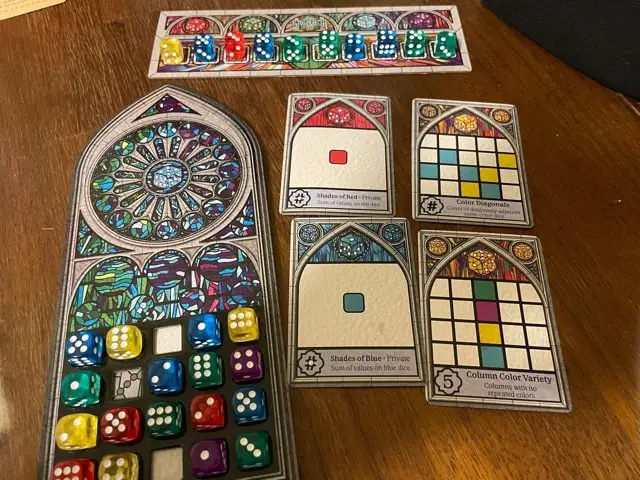
Winning the Game
To score, tally all of the points on the round track. To win, the points earned on the window card must exceed the total of the round track. In this game, the total is 37. To win, points earned must exceed this number.

Turn the score track over and place a marker on the 37. Beginning with the public objective cards, tally up the points. Do not move the dice off of the window card.
Public Objective card 1: Each column of dice placed earns 5 points. There are 3 columns with no repeated colors, earning 15 points.
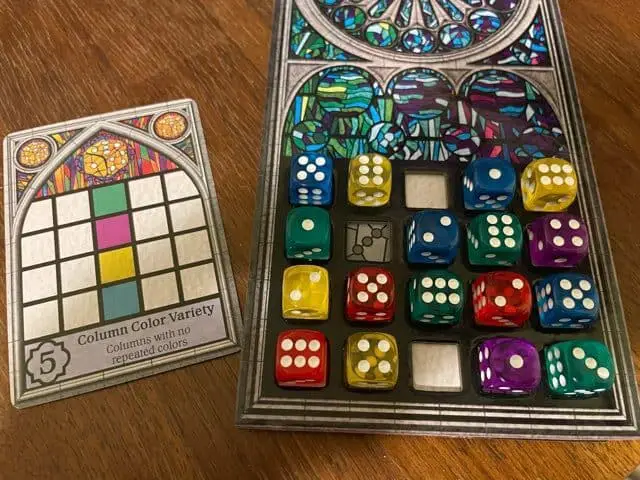
Public Objective card 2: There are 4 sets of matching diagonal colors. Each set earns 2 points, for a total of 8 points, bringing the score to 23.
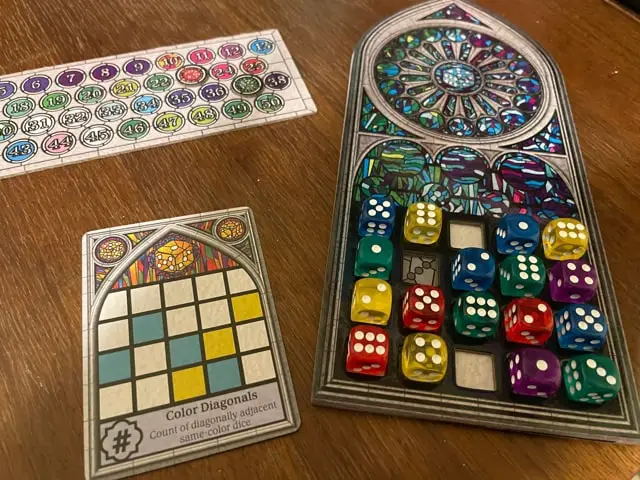
Private Objective card 1: Tally the face value of all red dice, for a total of 13 points, bringing the score to 36.
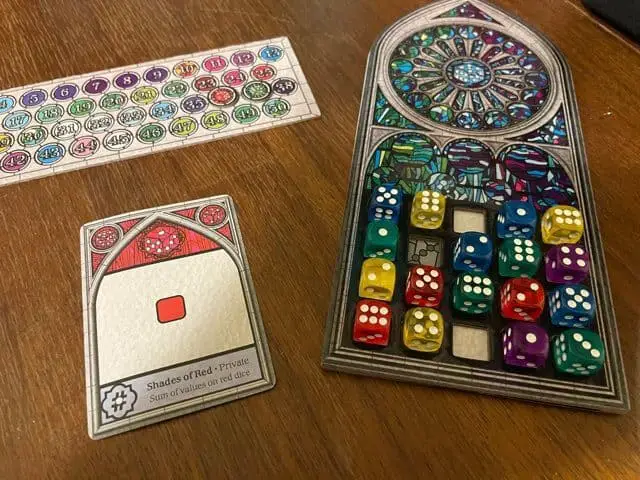
Private Objective card 2: Tally the face value of all blue dice, for a total of 8 points.
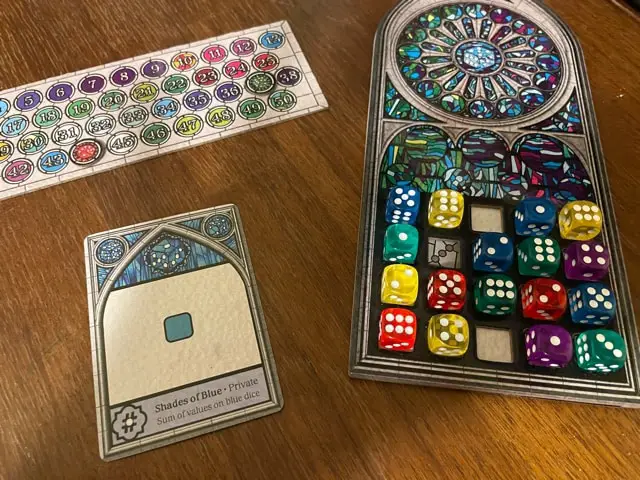
Total for all points is 44, which beats the target score of 37!
Conclusion
Sagrada solo play is as enjoyable as playing against other players and game time is short. If you’re looking for an alternative to solitaire, give Sagrada a chance. I think you’ll like it!

